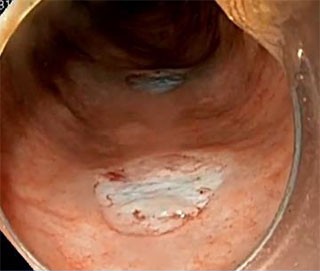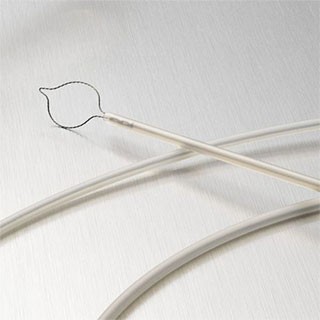A Perspective on Cold Snaring
Watch Dr. Rex’s complete presentation and learn about his cold snaring technique.
Watch the videoManaging Complications of Hot Polypectomy
Cold Forceps or Snares
Uses for Cold and Hot Snaring
For polyps that are 6 to 9 millimeters there are a few randomized controlled trials, the largest one from Japan. In it they have shown that the rate of complete resection with cold snaring is very close to or equal to hot snaring. Therefore, based upon the results of this study, cold snaring can be seen as an effective method for small polyps and the advantage is that cold snaring reduces the risk of delayed complications in most cases.2
There could be some exceptions. In my experience, hot snaring may be suitable for the occasional 6-9 mm polyp that’s pedunculated with a thicker stalk or one that has a very prominent sessile component to it. When dealing with a large number of polyps cold snaring can be very effective and safe.3
Captivator™ COLD Single-use Snare
Explore product details and ordering information.

Request a Rep
Connect with us for conversations on clinical data, techniques, disease management and more.


















